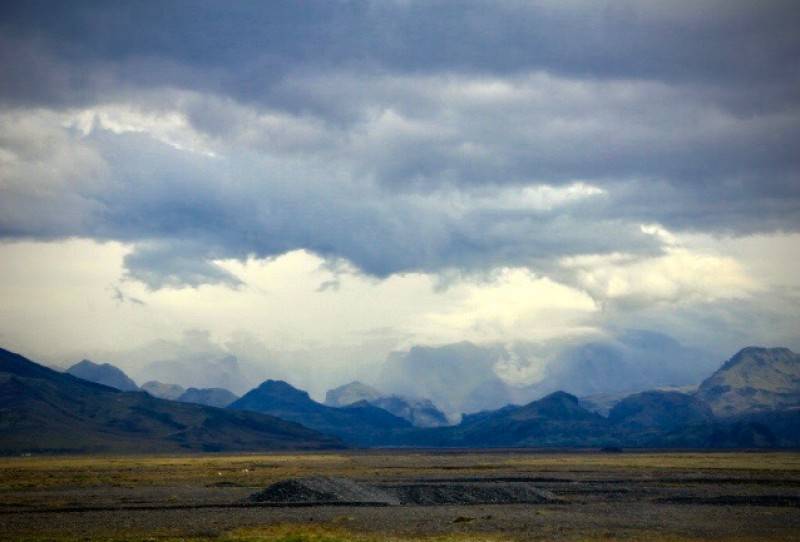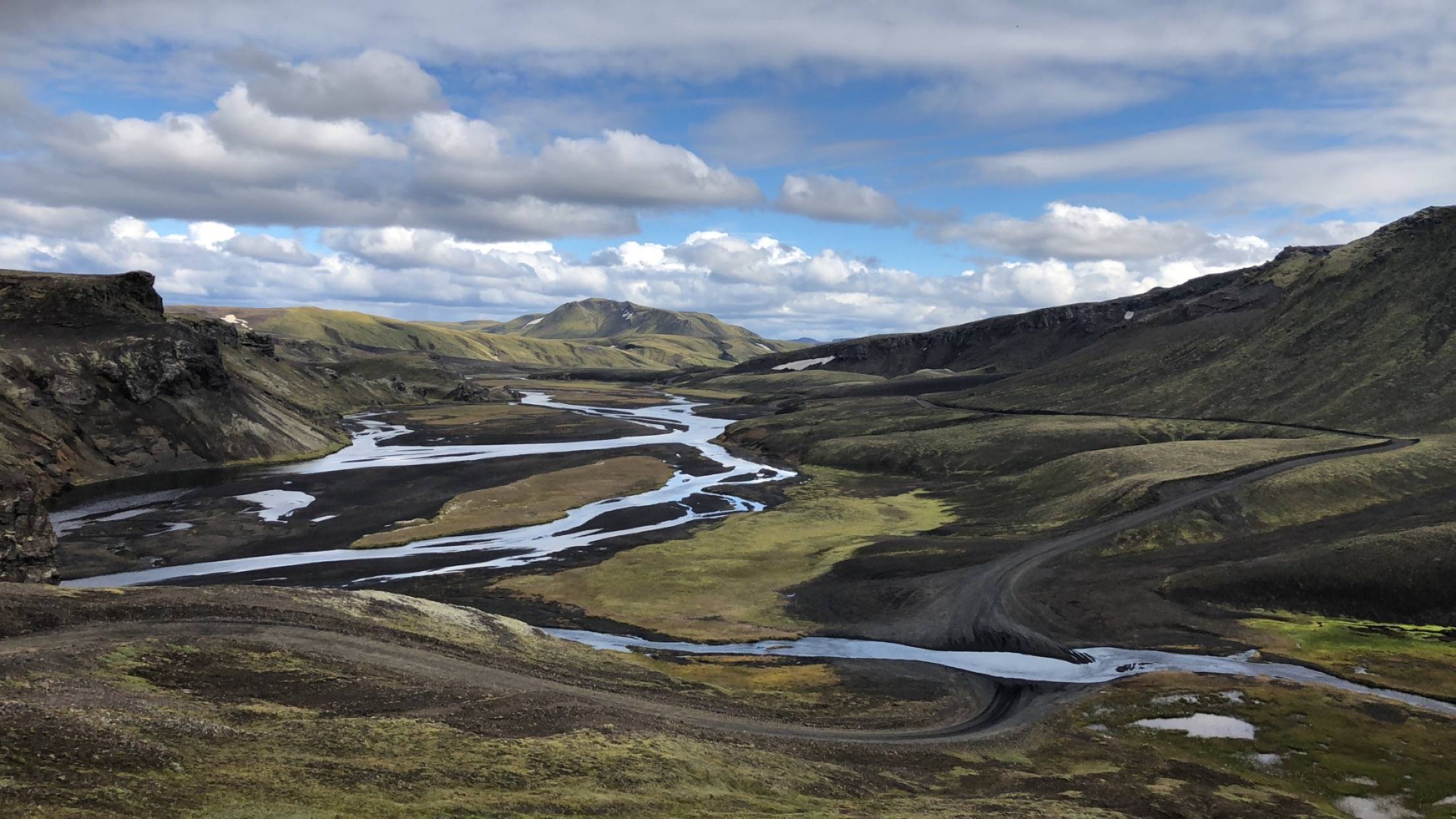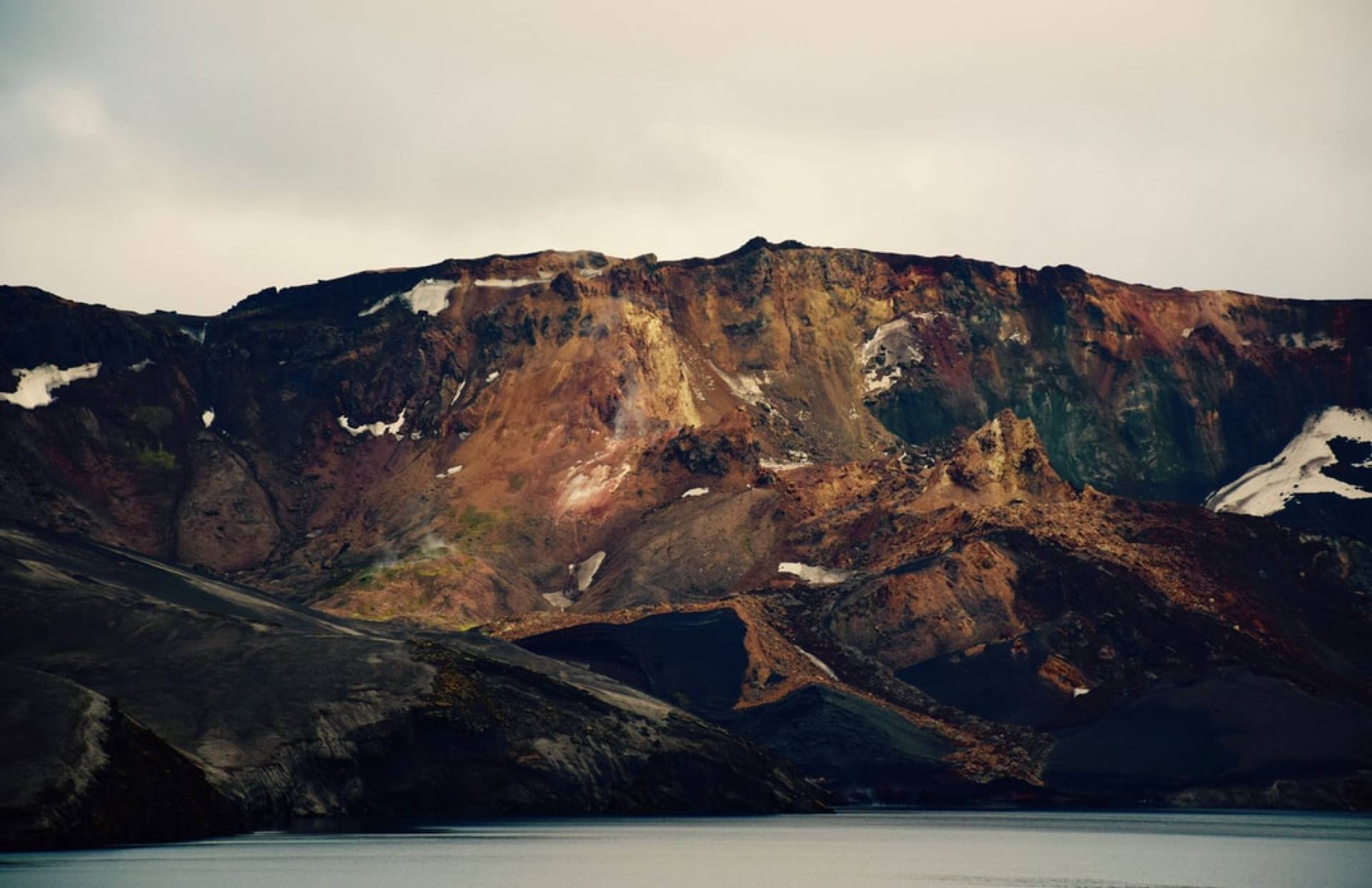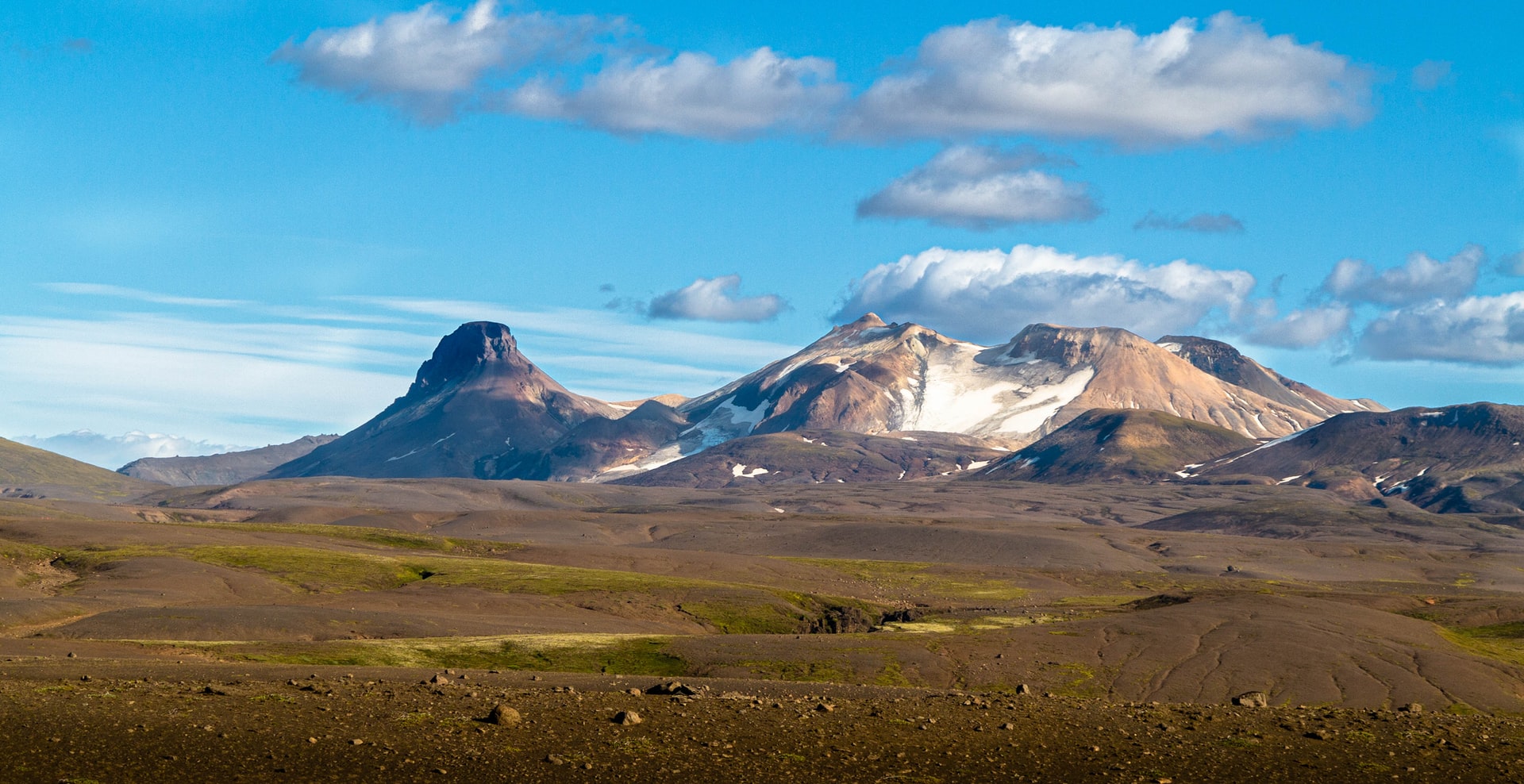Travel Guide to the Highlands of Iceland
Explore the beauty of the Icelandic Highlands. Discover top sights, 4x4 driving tips, best times to visit, and how to plan your self-drive adventure.
The Icelandic Highlands are one of the most unique wilderness areas in Europe. Accessible only during the summer months and primarily by 4x4 vehicles, the highlands offer adventurous travelers a chance to explore Iceland’s most remote and dramatic landscapes. In this guide, we’ll cover everything you need to know for a safe and unforgettable journey through the heart of Iceland’s interior.
What are the Icelandic Highlands
The Icelandic Highlands are a vast, remote, and uninhabited region that covers most of Iceland's interior. Known for dramatic volcanic landscapes, glacier rivers, majestic mountains, and geothermal wonders, the Highlands offer some of the most breathtaking natural scenery in the country.
Are the Highlands Worth Visiting?
Yes! The Highlands are absolutely worth visiting. If you're looking for untouched nature, epic hiking trails, and otherworldly scenery, the Highlands are a must-visit. You'll find steaming lava fields, multicolored mountains, expansive deserts, and glacier-cut valleys. Whether you're trekking through Landmannalaugar or standing at the crater of Askja, the experience is raw, wild, and unforgettable.

Best Time to Visit the Highlands
The Icelandic Highlands are only accessible during the summer months, typically from mid-June to early September, when F-roads open to traffic (mountain roads). These rugged gravel tracks are closed for most of the year due to snow, river levels, and poor driving conditions. During this short window, travelers can experience the raw, untouched beauty of Iceland's interior but keep in mind that timing matters, as each month offers a slightly different experience in terms of weather, accessibility, and crowds.
June
June marks the beginning of the Highland travel season. In early June, some F-roads may still be closed due to lingering snow or wet conditions, especially in higher-altitude areas like Askja or Maelifell. However, by mid to late June, most major routes begin to open. The days are long, with nearly 24 hours of daylight thanks to the midnight sun, making it an ideal time for long hikes and photography.
Expect cooler temperatures, snow patches in higher areas, and fewer crowds. Wildflowers start blooming across the landscape. This is a fantastic time for solitude and untouched trails.
July
July is peak season in the Highlands. All major F-roads are usually open, weather is relatively stable, and trail conditions are at their best. This is the warmest month of the year in Iceland, though temperatures are still mild, ranging from 10–15°C (50–59°F) in the Highlands, depending on elevation.
Rivers are calmer and more predictable for crossings, and campgrounds and mountain huts are fully operational. This is also when you'll find the largest number of hikers on popular trails like Laugavegur and Fimmvörðuháls. Expect busier sites, but also more services and accessible routes.
August
August continues the favorable summer conditions, with full Highland access and slightly fewer crowds than July. The vegetation is still green and vibrant, and the weather remains suitable for hiking, photography, and F-road driving.
However, as the month progresses, daylight hours begin to shorten and nights get cooler, especially toward the end of August. This transitional time also offers a chance to witness the first signs of autumn color creeping into the Highlands’ mossy landscapes.
September
September marks the end of the Highland season. By mid to late September, many F-roads begin to close again due to early snowfall, wet conditions, or rising river levels. However, during the first week or two of the month, some areas may still be accessible if conditions allow.
The air turns crisp, and the Highlands become dramatically colored with shades of orange, red, and gold. While daylight hours are shorter it also means that you might have a chance to glimpse the northern lights on clear nights, which isn’t possible during the brighter summer months.
The 10 Best Things to See in the Highlands
There is so much to see in the Highlands that you could easily spend several days exploring and not see everything of note. With that in mind, we’ve come up with a list of the 10 best things to see in the Icelandic Highlands, complete with what to see, what to expect, and how to get there.
Landmannalaugar
Landmannalaugar is located within the colorful Fjallabak Nature Reserve, known for its vibrant rhyolite mountains, lava fields, and natural hot springs. It’s a hiker’s paradise and a starting point for the famous Laugavegur trail.
How to Get There: Reaching Landmannalaugar typically requires a high-clearance 4x4 vehicle. You can drive from Reykjavík via the F208 or F225, but be prepared for rough terrain and river crossings.

Þórsmörk Nature Reserve
Þórsmörk (Thorsmork) is a lush valley surrounded by glaciers and mountains. It’s one of the best hiking destinations in Iceland, offering access to trails like Fimmvörðuháls.
How to Get There: Getting to Þórsmörk is challenging. You’ll need to cross the powerful Krossá River. Unless you have a super jeep and experience with river crossings, we recommend taking a highland bus. Please keep in mind that it is forbidden to take Icerental4x4 vehicles to Þórsmörk. We recommend taking a super jeep tour.
Askja
Askja is a massive caldera in the remote central Highlands, offering lunar-like landscapes and the deep Víti crater lake. It’s a surreal experience for geology lovers.
How to Get There: To visit Askja, a 4x4 is mandatory. Drive via F88 or F910 from the north. The roads are long, rough, and require planning, including fuel stops and weather checks.

Kerlingarfjöll
Kerlingarfjöll is a mountain range filled with steaming geothermal valleys, red hills, and snow patches. It's ideal for hiking and photography.
How to Get There: Located along the Kjölur route (F35), Kerlingarfjöll is one of the more accessible Highland destinations but still requires a 4x4. No river crossings make it more beginner-friendly.

Hveravellir
Hveravellir is a geothermal area with hot springs, fumaroles, and a natural pool for bathing. It lies between the glaciers Langjökull and Hofsjökull.
How to Get There: Easily accessible via the F35 (Kjölur route) with a 4x4 vehicle. Combined with a trip to Kerlingarfjöll.
Lakagígar: The Laki Craters
A chain of volcanic craters formed during one of the largest eruptions in recorded history. It's a dramatic landscape of lava fields and moss-covered craters.
How to Get There: Reachable via F206 from Kirkjubæjarklaustur. A 4x4 is necessary, and the road is rough with river crossings.
Maelifell Volcano
Maelifell is a striking cone-shaped green volcano rising out of the black sand desert. It’s one of the most iconic photo spots in the Highlands.
How to Get There: Access is via F210, which includes challenging terrain and multiple river crossings. A capable 4x4 is essential.
Eldgjá
Eldgjá is the largest volcanic canyon in the world and home to Ófærufoss, a beautiful waterfall.
How to Get There: Located along F208 between Landmannalaugar and Kirkjubæjarklaustur. A 4x4 vehicle is required; expect rugged driving.
Hekla Volcano
One of Iceland’s most active volcanoes. While hiking is sometimes permitted, caution is advised due to potential eruptions.
How to Get There: Reachable via F225 or F26. Suitable only for well-equipped 4x4 vehicles.
Langisjór Lake
A remote and beautiful lake surrounded by volcanic landscapes. A hidden gem for those seeking solitude.
How to Get There: Accessed via F208 or F235, with river crossings and rough terrain. Only experienced drivers with 4x4s should attempt.
Where to Stay in the Highlands
Accommodation options include mountain huts, basic campsites, and a few remote Highland lodges. Many sites also allow tents and campervans, including the Highland Base in Kerlingarfjöll, Landmannalaugar Campground, and Hveravellir Campsite, to name just a few. Make sure to check ahead before you go. It’s best to book in advance, especially during peak season.
How to Self-Drive in the Highlands of Iceland
Driving in the Highlands requires preparation. F-roads are rough, often unpaved, and may involve river crossings. Travel time from Reykjavík to Highland entry points can vary:
- Landmannalaugar: ~4 hours
- Askja: ~8–10 hours
- Þórsmörk: ~3.5 hours (but tricky due to river crossings)
- Kerlingarfjöll: ~4 hours
Vehicle Requirements & Rental Tips
A 4x4 vehicle is mandatory. Choose a rental suited for F-roads, and make sure to get appropriate insurance coverage.
River Crossings
River crossings can be extremely dangerous and are not recommended unless you have a lot of experience with crossing rivers. Attempting to cross a river without proper knowledge, preparation or with a vehicle that is not fitted for it, may result in getting your vehicle completely stuck in the current, flooding your engine, and putting your own safety at serious risk. Always check river conditions before attempting to cross and find a different route if the way is impassable.
Weather & Road Conditions
Icelandic weather can change rapidly. Check road conditions and stay alert to extreme weather conditions.
(we want to link to the external site; https://umferdin.is/en for read conditions)
Car Rental Insurance
(Please can you review the information provided here, just to make sure there are accurate regarding your insurance policy:)
Every Icerental4x4 rental comes with Collision Damage Waiver (CDW), Third Party Liability (TPL), and Theft Protection (TP) included. However, highland driving requires extra coverage, so you may want to consider additional options, such as Gravel Protection (GP), Sand and Ash Protection (SAAP), or one of our Premium or Platinum Packages. For more details on the different types of insurance you may need for your highland trip, check out our detailed guide on car rental insurance in Iceland.

Highland Safety Driving Tips
Always prioritize safety. A 4WD vehicle is an absolute must when traveling the Icelandic highlands, check weather, drive slowly, inform someone of your route, and read our guide to safely driving in Iceland.
How to Plan Your Highland Road Trip
Planning is key for a successful Highland adventure:
- Be prepared for rapidly changing weather
- Fuel up before entering remote areas
- Plan routes in advance
- Be flexible with your schedule
- Bring appropriate clothing and safety gear
Packing list ideas:
- GPS or offline maps,
- Waterproof gear,
- Hiking boots,
- Thermal layers,
- First aid kit,
- Portable battery,
- Extra fuel canister,
- Food and water supplies
- Waste bags
Exploring the Highlands of Iceland: Final Words
The Icelandic Highlands offer a raw, scenic, and unforgettable journey. With the right preparation, a reliable 4x4 vehicle, and respect for nature, it can be the highlight of your trip to Iceland. Be ready for breathtaking views, some of the best hikes in the country, and unforgettable camping and sightseeing experiences.
